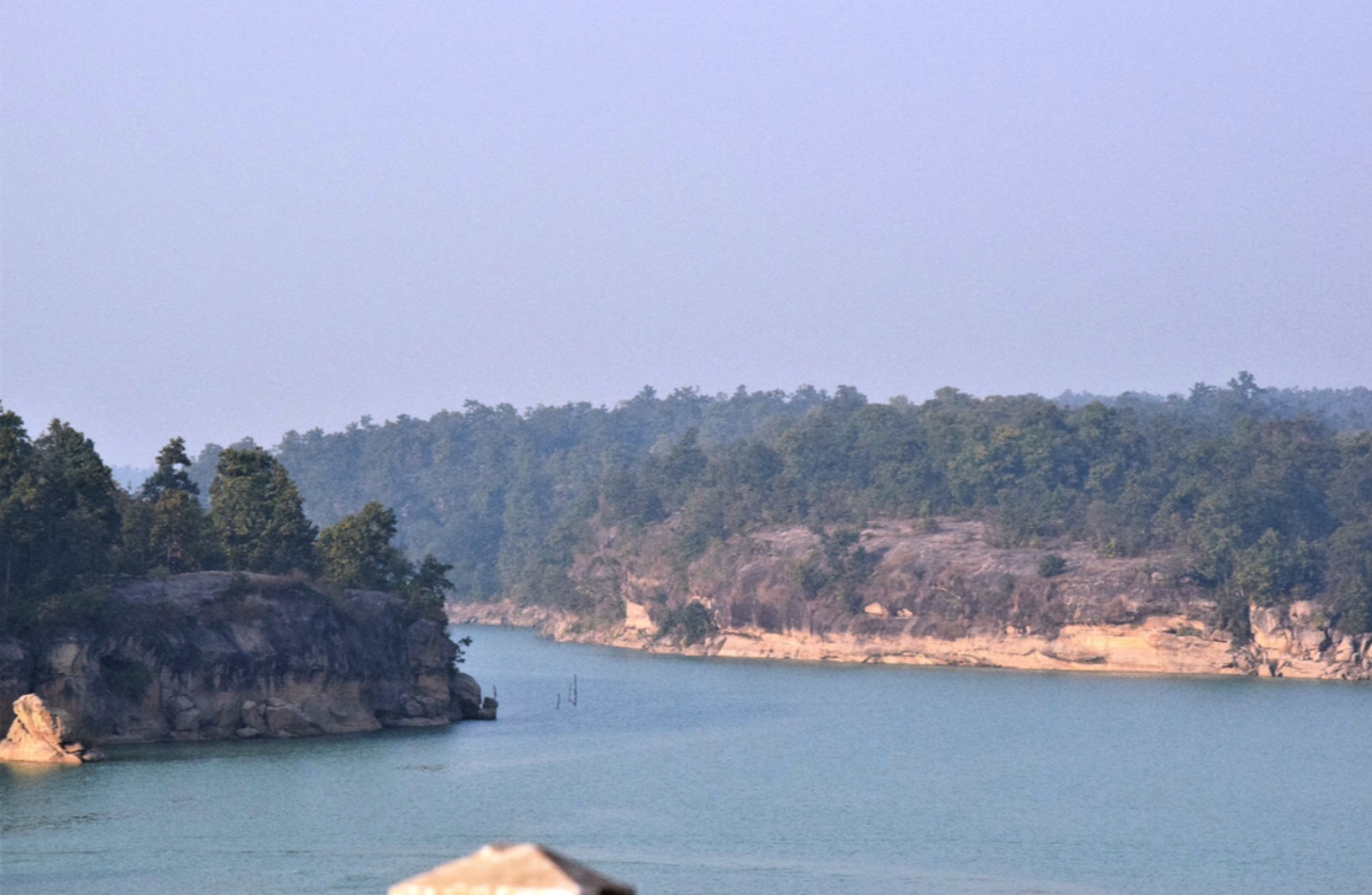Forest Act amendments strike at heart of Indian forests

Forests of Hasdeo Arand in Chhattisgarh are under threat due to coal mining industry (Photo: Andrew Davidson/Wikimedia Commons)
Amid the Covid-19 pandemic and ensuing lockdowns, despite some environmental benefits such as the large decline in air pollution, the world’s looming environmental crisis has raged on. Globally, the destruction of rainforests was up by 12 pc in 2020 from 2019, and according to a report by the Global Forest Watch, India lost 14 pc of its tree cover equivalent to 38,500 hectares of tropical forest.
Ironically, this report was not released very long after Environment Minister Prakash Javadekar’s claim in December 2019 that according to the Forest Survey of India (FSI), “India is among few countries in the world where forest cover is consistently increasing,” rising to 24.56 pc of the total geographical area of the country.
This blatant discrepancy between claim and fact is nothing new, as once again, the Centre is choosing to cause irrevocable harm to the environment right under citizens’ noses. Slipping in a very significant public notice that would have wide-ranging and long-lasting impact on the remaining forests buried under issues such as pandemic concerns and the nationwide farmers’ protests, the Ministry of Environment, Forest and Climate Change (MoEFCC) has proposed 14 new amendments to the 1980 Forest (Conservation) Act, drawing furore from environmentalists and civil rights activists.
The amendments essentially seek to redefine controversial activities such as zoos and forest training infrastructures as actually necessary for forest and biodiversity conservation. More importantly, it asks for exemption from requiring prior forest clearance altogether for “strategic projects,” presumably including mining and construction work, which would effectively remove the reason the Act was established in the first place. Environmentalists say in order to improve the “ease of business” for its wealthy accomplices, the Narendra Modi-led government is turning a blind eye to immense potential damage and disguising it under the charade of “development.”
“The Ministry basically wants to give easier clearance of forests to cater to and give into the pressures of corporate economy. Mining corporates are all in favour of automatic environmental clearance so that they can start their projects, and so they do not have to care about the impacts of deforestation or rehabilitation of the local people,” Gautam Bandyopadhyay of Nadi-Ghati Morcha, an NGO working on land and water issues in the central Indian state of Chhattisgarh, home to some of the densest forests as well immense mineral reserves, tells Media India Group.
Fait accompli, not a democratic law
More alarmingly, MoEFCC has given a measly 15 days for consultations, despite Centre’s own pre-legislative consultation policy that requires at least 30 days to be stipulated for discussion as well as wide publicity, which is important in order to make sure the affected parties can understand the ramifications of such decisions. On 12 October, 10 days after the initial notice and after loud protests over violation of the law, the government extended the deadline for submission of comments and suggestions until November 1, but amid the confusion of these sudden changes, it remains to be seen whether this will truly allow the information to be properly publicised to those involved.
Moreover, the notice was published only in English, thus automatically cutting off nearly all tribals who would be impacted by the changes as well as many, if not most, environmental activists. Several activists have thus demanded that the Consultation Paper should be publicised in all 22 regional languages.
“Fifteen days is much too short, and especially because if the environmental contract being discussed is in a very remote geo-cultural area, it is very tough to make sure the victims (locals) understand what is supposed to be submitted and the adverse impact on their life and environment both, so it is a basic necessity and justice for appropriate time to be given for this information to reach them,” says Bandyopadhyay.
This apparent lack of concern, however, is hardly a new development. In 2019, the government had once again proposed to mine one of the largest coal reserves in India, located in the heart of Hasdeo Arand forests in Chhattisgarh. Despite initially being designated as a “no-go” area due to its pristine, ecologically sensitive forests and rich biodiversity, perhaps unsurprisingly, the only goal seems to be for the benefit of India’s wealthy, as several companies lobby for a stake in what will be a privatised, commercial coal mining operation, including billionaire industrialist Gautam Adani’s Adani Group.
To protest against this latest development in the decade-long fight against coal mining in Hasdeo, thousands of Chhattisgarh’s tribals completed a 300-km march to the state capital of Raipur, to continue their battle against yet another government illegally bypassing local and national laws to award huge private contracts to India’s rich and powerful.
The Hasdeo proposal has caused uproar among environmentalists, locals, and states with significant forest cover, Maharashtra, West Bengal, Jharkhand and Chhattisgarh. The proposal to open the forests to mining comes with questionable, even laughable, claims of use of technology that supposedly will not harm forest soil aside, mining and extraction of minerals, the world over and even with the latest technology and under strictest implementation of rigorous environment protection laws, is well known to cause large-scale devastation to the environment beyond deforestation; pollution of surface and groundwater in particular adversely affects agriculture, fisheries and health of livestock, and can even contaminate the water resources as Indian forests are the source of almost all non-Himalayan rivers in the country.
But despite protests from villagers that the mining contravenes their community forest rights, protected under the Forest Rights Act of 2006 and the Land Acquisition Act of 2013 for example, as well as numerous cases pending in the Supreme Court for years, full-scale mining activities have already begun in the area, and experts say even if it is stopped once legalities are through, the severe damage caused in the entire region will be irreversible and open up the path for even more destruction, creating a vicious cycle.
“Of course, the amendments will be very bad for the environment. Hasdeo is a very biodiversity-rich area, so if they forgo environment protection in favour of physical development, it will not only disrupt the climate and culture of the tribal people over here, it will impact the country’s climate as well as the global climate. The status of the India’s forests is declining day by day. If we make an exception for one, it will create a precedence to disturb more and more,” explains Bandyopadhyay.
Moreover, in its order to unlock land for building infrastructure, experts say the MoEFCC is attempting to compensate the damage of deforestation with plantations, by incentivising planting trees on private land, but this is simply an attempt to pull the wool over people’s eyes rather than an actual solution.
“Plantations will not reduce the impact of deforestation at all. That is a basic lack of scientific understanding of the environment – plantation of new trees do not replace centuries old natural forest. And eventually, even if you can regenerate the forest, you cannot compensate for the lost biodiversity of that particular region,” explains Bandyopadhyay.
Indeed, various studies about the carbon storage by forests and their role in environmental protection show without a shadow of doubt that older forests offer far higher protection than newly planted trees. Findings in a 2014 study by Pacific Forest Trust, a non-profit conservation land trust, revealed that 97 pc of trees from more than 400 species studied grew more quickly as they aged, thus absorbing more carbon.
Turning a blind eye to locals’ rights

Local tribals in Chhattisgarh stand to lose the most if the amendments are passed without sufficient consultation. (Photo: MIG Photos)
One of the most contentious aspects of these amendments is the complete disregard to the constitutionally and legally-mandated procedures when it comes to protecting rights of local forest communities, the group that stands to lose the most if the amendments are passed. For example, while offering full relaxation to businesses like safaris, zoos, mining and other non-forest use, the amendments restrict community access and traditional ownership of forest dwellers, even though this has been the case for centuries.
“Local communities in forests will face significant damage to their life and culture, but their complaints are not being heard and their submissions are not being treated properly even though the Constitution lays a clear procedure for these. Even the Forest Act says if the forest provides to the (local) people, it cannot be [used for industrial purposes] without their permission. It is their birthright if they are living in that particular region, so how can it be taken away? The government should develop a policy to maintain and preserve that right,” says Bandyopadhyay.
Already, India has a history of conflict between forest dwellers and officials of local forest departments, with several stories of forest dwellers being unnecessarily harassed by forest officers. About 100 million forest dwellers in India depend on forests as their main source for livelihood and cash income from picking up dry twigs for fuelwood or construction materials, but currently, nearly a million cases are pending against forest dwellers. The new Act will worsen this tension as it discourages locals from straying into forests for these exact activities, making them the offenders rather than the private companies who will destroy their habitat. This discrimination is clearly noticeable in the new Act’s leniency towards offences against conservation, by shortening imprisonment to only 15 days compared to the old Act provision of at least one year’s imprisonment.
But even if the government does create new policies to protect the locals’ rights, it remains to be seen if this will truly help. The Forest Act, which was passed in the 1980s was meant to prevent rapid deforestation, now seems to be doing just the opposite, which suggests future policies may simply remain on paper as well, especially without the required dialogue between concerned parties.
“The government should rethink this decision, and they should discuss with environmentalists as well as people who actually live in these forest zones. I am not saying degradation of forests is the only factor in the climate crisis, but without dialogue, without discourse, without preparing for a bigger future, we cannot save our environment,” says Bandyopadhyay.









